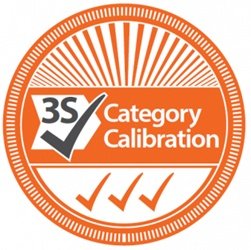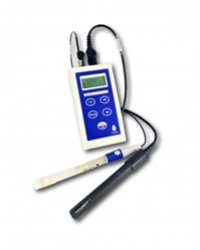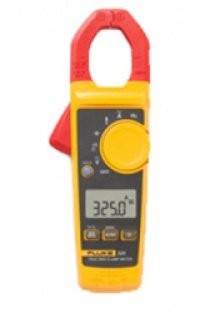Keep Your Instrument In-Check With Instrument Choice’s Calibration Services

Calibration is critical wherever reliable measurements are required - like when making decisions that can have significant legal, educational, financial, social, health and safety outcomes.
This article summarises the range of calibration services available at Instrument Choice that will ensure your equipment meets industry standards and performs to the highest degree of accuracy. Remember, your instrument is only as good as the quality of its calibration!
What Is Calibration?
Calibration is a measurement comparison between an instrument or item of known correctness and the unit under test. This comparison determines the accuracy of the instrument under test.
How Often Should I Calibrate My Instrument?
In addition to regular in-house calibration, most instrumentation should be calibrated in a calibration laboratory at least once a year. For sensitive items like gas detectors, you may need to calibrate more frequently, say every six months. Check to see if specific requirements related to your industry require more frequent calibration of your equipment.
Different Mechanisms for Calibration - Offset vs Adjustment
1. Adjustment
Some pieces of instrumentation can be adjusted to match the calibrator or the standard. For example, the C-DSM1 Sound Level Meter can be calibrated to 94dB using an acoustic calibrator. If the C-DSM1 tested at 94.5dB with the calibrator, you could adjust it manually to 94dB to match the standard, which is more accurate.
2. Offset
If an instrument does not have an adjustment feature, you will need to apply an offset. Calibration certificates are issued for equipment with the offset you need to use. For example, the 0560-1113 Waterproof Food Safety Mini-Thermometer is not adjustable. If the laboratory calibrated the thermometer to 10.0°C and the instrument returned a reading of 10.5°C, you would need to apply an offset of -0.5°C to your readings for the most accurate measurement.
NATA vs NATA Traceable
Instrument Choice offers a range of both NATA Certified and Non-NATA Traceable instrument calibration services.
- NATA calibrations: NATA calibrations are performed in laboratories independently audited by NATA and meet the requirements set out in the international standard ISO/IEC 17025. NATA certification is necessary for scientific instruments used as references to transfer their measurement accuracy to other instruments.
NATA calibration certificates include:
-
- the uncertainties of measurement
- details of the reference instrument used; and
- documented evidence to support an unbroken traceability chain of calibrations and associated measurement uncertainties.
- Non-NATA Traceable Instrument Calibration Service: Almost 95% of instrument calibration service requirements do not require the calibration of an instrument to NATA standards. Traceable calibration is performed in a laboratory not audited by NATA and may not meet the requirements set out in ISO/IEC 17025. However, there is traceability to NATA as the equipment used is NATA calibrated.
Instrument Choice Calibrations Services
Standard Traceable Calibration
- 2 Point Standard Traceable Calibration. Available for:
- Probe temperature
- Ambient temperature
- IR Thermometer
- Sound Level
- Wind Speed
- Light Level
- Digital Scales
- Tachometer
- pH
- Conductivity
- Temperature/Humidity
- 3 Point Standard Calibration for Humidity-RH
- 3 Point Standard Calibration for Temperature
- 3 Point Standard Traceable Calibration. Available for:
- IR thermometer
- Sound level
- Wind speed
- Light level
- Digital scales
- Tachometer
- pH
- Conductivity
- 5 Point Standard Traceable Calibration. Available for:
- Probe temperature
- Ambient temperature
- IR thermometer
Nata Calibration
Temperature
- NATA-2S-Temp 2-point Nata calibration for temperature meters.
- Nata Calibration for Ir Or Probe Thermometer (-18,3C,70C)
- Nata Calibration Certificate Loggers At +2, +5C And +8C only
- 3 Point Nata Calibration Certificate for Temperature Meters
Humidity
Sound
- NATA Calibration of a single level/frequency acoustic calibrator in accordance with IEC 60942
- NATA Calibration of a dual-level/frequency acoustic calibrator in accordance with IEC 60942
- NATA Calibration of Sound Level Meter in accordance with IEC 61672-3 and DIN 45657 and 1/1 and 1/3 Octave Band Filters in accordance with IEC 61260
- NATA Calibration of Sound Level Meter in accordance with IEC 61672-3 and DIN 45657 and 1/1 Octave Band Filters in accordance with IEC 61260
- NATA Calibration of Sound Level Meter in accordance with IEC 61672-3 and DIN 45657
- NATA Dosimeter calibration in accordance with AS/NZS 2399
Conclusion
Over time the calibration of most instruments will drift, resulting in inaccurate, unreliable and possibly non-compliant readings. Send your equipment to an accredited instrument calibration service provider like Instrument Choice and having it calibrated in a lab under controlled conditions will give you confidence in its accuracy.
Need a hand finding the correct calibration service for your application? Speak with an Instrument Choice Scientist! Call 1300 737 871 or email [email protected].
Also interesting
For consistent and accurate measurements when using your Aqua-CPA, it is essential to perform frequent pH and conductivity calibrations. This how-to guide explains the correct calibration method for the Aqua-CPA and provides helpful tips along the way.
Learn to calibrate the TPS Aqua-CPA here

Digital clamp meters are popular tools used by electricians and electrical contractors to obtain measurements from:
- industrial controls and equipment
- electrical systems; and
- commercial HVAC systems.
This article further defines what digital clamp meters are, lists their benefits, then highlights some typical product examples, including notable features and applications.


